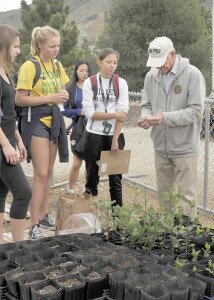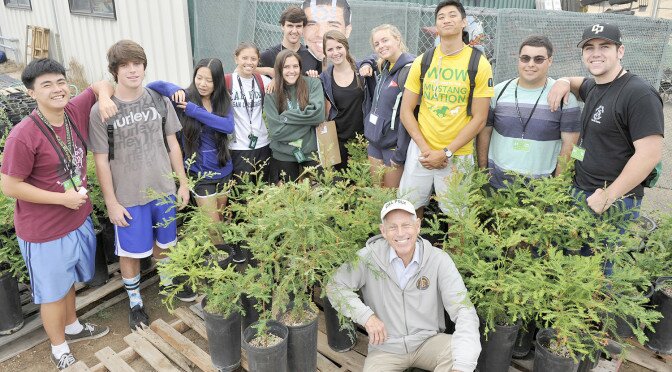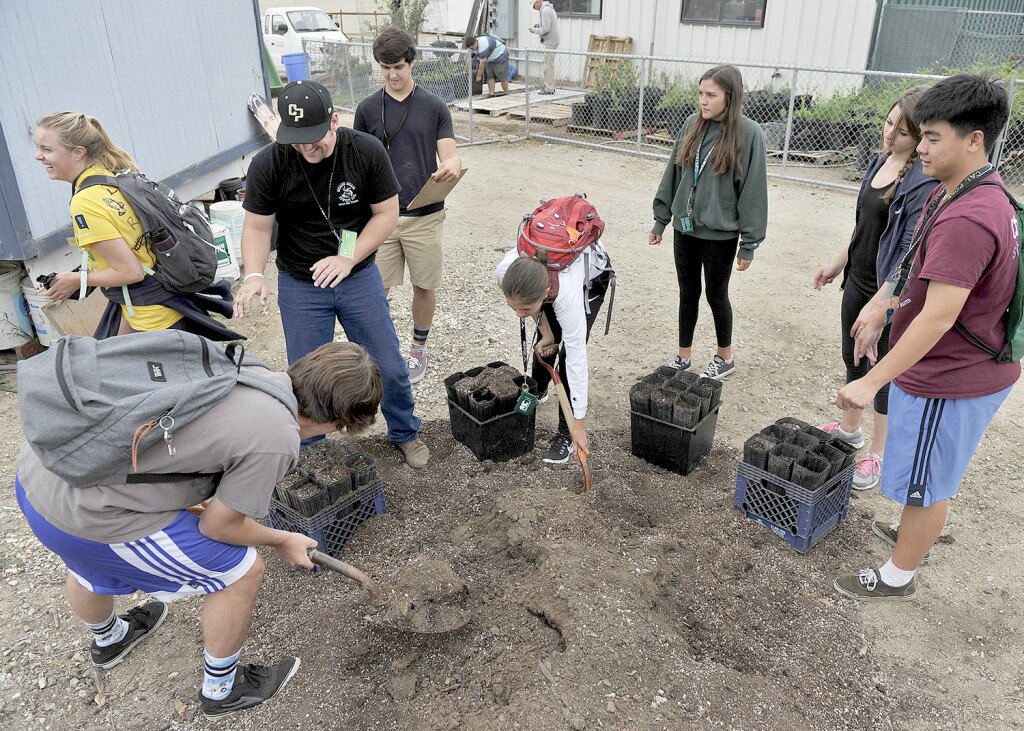By Camas Frank
Photos by Jay Thompson ~
It’s a jungle out there.
Visit SLO’s Downtown as the fresh crop of Cal Poly students come in for the year and one can hear almost as many locals grousing about the unending flow of “WOWies” — cruising town and seemingly learning how to drive Higuera Street — as there are yellow and green shirts on display.
However, a large number of the new arrivals are eager to make a good impression and prove to the SLO community that they’ll be something more than rampaging Mustangs.
The university estimates that 2,500 incoming freshmen and transfer students are taking part in a program to give back to the community almost before they’ve taken anything.
At least 25 non-profit organizations are benefiting from the influx of volunteers on organized workdays during the school’s “Week of Welcome.”
Depending on their field of study and if they’re inclined, many of the students will maintain relationships with these organizations, racking up extra-curricular activities or eventually needed material for senior projects.
Organizations receiving help include: Access Support Network, Camp Ocean Pines, Central Coast Aquarium, Central Coast Salmon Enhancement, ECOSLO, Family Care Network, Garden House, Granite Ridge Camp, Growing Grounds, Guadalupe-Nipomo Dunes Center, Hospice San Luis Obispo, Housing Authority SLO, Learning Among the Oaks, Maxine Lewis Memorial Shelter, Meade Canine Rescue, New Life K-9, People’s Self-Help Housing, Rancho El Chorro Outdoor School, RISE, SLO Botanical Garden, The Ranch/UCP and the Women’s Shelter in SLO.
“Days of Service is a great way to get new students into San Luis Obispo and help them understand how rewarding it is to get involved and give back to out community,” orientation team member, Kendra Martz, said in an announcement of this year’s activities. “We enjoy partnering with community organizations to promote a positive relationship between students and the community. The best way to promote this relationship is to get students out into San Luis Obispo.”
The work isn’t limited to the City of SLO. After 12 years the movement has connections with every population center in the region, with students scattered like buckshot pitching in all over the map.
Indeed the large number of events has led to some logistical issues.
Lionel Johnston, organizer for the tree planting nonprofit, One Cool Earth, was waiting for some students by the Sports Complex on campus when he heard the group had been sent to Paso Robles instead. Nevertheless, he was grateful for the relationship they have with Cal Poly and the chance to spread some of the passion for their work to the next generation.
“We’ve been working in SLO for 25 years with two nurseries and gardens producing saplings,” he said, explaining that severe drought mixed with climate change has led to the biggest die off of pines and eucalyptus trees in generations, a plague. “The best fix is to keep planting small native trees in the fall.”
On campus, he added, the same situation is replicated from schoolyards, public lands and private forests across the Central Coast, that of plagued trees requiring expensive removal. It’s one of many current problems that the next generation is going to have a larger role in fixing.
On the Saturday before classes started, Johnson did get his Cal Poly crew for a different site. As with all of the charitable organizations, the students who bent their backs to plant new trees where the fresh life will do the most good, will be welcome back wherever they seek to serve.


